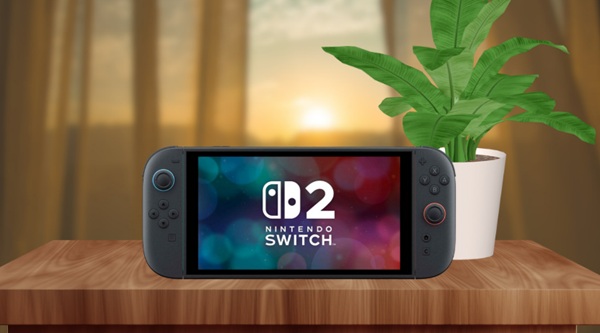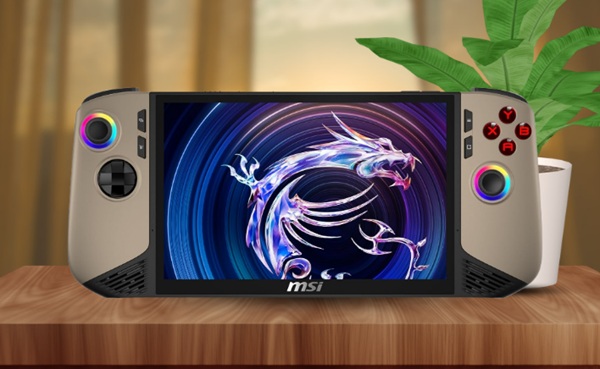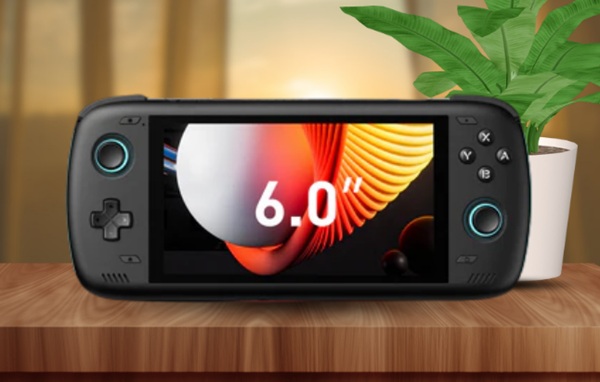
Are you on the lookout for the perfect handheld gaming console in 2025? You’re not alone. This year has seen some major waves: Valve’s Steam Deck continues its reign, Nintendo has launched the groundbreaking Switch 2, and Microsoft teamed up with ASUS to release the first-ever Xbox-branded handheld devices. With each of these beasts vying for your attention, it can feel overwhelming to figure out which one fits your play style best.
In this deep dive, we’ll break down each handheld gaming console—what makes them stand out, where they fall short, and who should buy what. We’ll explore performance, display, comfort, game library, and price. By the end, you’ll have a clear picture of which one suits your gaming habits and lifestyle—even if you’re torn between PC gaming freedom, exclusive Nintendo adventures, or cloud-powered Xbox flexibility.
1. Steam Deck: The Veteran Powerhouse
Strengths
-
Massive game library: Steam Deck grants access to Valve’s enormous Steam catalog and, via apps, to Epic, GOG, or even Game Pass games.
-
Value-packed performance: It excels at 800p or 1080p handheld gameplay, especially with Valve’s FSR upscaling.
-
Versatile software environment: You can switch between gaming mode, desktop mode, and run emulators or Linux software as you like.
-
Robust community support: Regular firmware updates and active modding make it feature-rich.

Weaknesses
-
Bulky build: Heavier and thicker than competitors—at around 669g (LCD) or 640g (OLED), it’s not the lightest.
-
Battery drain: High-end gaming can eat battery quickly—lasts up to 8 hours on light use, but closer to 2 in demanding sessions.
-
Aging internals: Its Zen 2 APU lags behind the latest silicon in Steam Deck 2 and rivals.
2025 Updates
Recently, Valve enabled GeForce Now streaming directly on the Steam Deck. Early tests show up to 1440p/60 FPS gameplay—even for AAA titles—while improving battery life dramatically. That means even if your internal hardware can’t keep up, a fast internet connection can bridge the gap with cloud power.
2. Nintendo Switch 2: Mixing Power & Portable Joy
What’s New
-
Bigger 7.9″ 1080p LCD display with 120 Hz refresh, HDR10, VRR support—crisper visuals than Steam Deck LCD/OLED.
-
Custom Nvidia Tegra T239 chip with DLSS and basic ray tracing; roughly equal to Switch 2 Console Mode ~PS4-level power, slightly above Steam Deck LCD but below flagship PC handhelds.
-
DDR5 12 GB RAM, 256 GB internal storage, plus microSD expansion and docked 4K output.

Pros
-
Perfect blend of power & exclusives: Standalone Nintendo experience with fresh Mario, Zelda, and third-party hits like Hogwarts Legacy.
-
Sleek & light: Thinner and almost 130g lighter than Steam Deck LCD. The profile is just 13.9 mm thick—comfortable and easy to hold in bed.
-
User-friendly performance: With DLSS and Nintendo’s optimization, it looks surprisingly good for a handheld console.
-
Game-Key Cards and hybrid mode keep things seamless.
Cons
-
Battery life lags: Expect 2–6.5 hrs, depending on settings; less than Steam Deck’s 12 + hrs in cloud mode.
-
Limited RAM: 12 GB is workable, but some heavy PC ports may get pushed or downgraded.
-
No OLED panel: Still an LCD—fine, but doesn’t match Steam Deck’s OLED contrast.
3. Xbox’s First Handheld: ROG Xbox Ally & Ally X
In a large-scale collab with ASUS, Microsoft debuted not one, but two Windows 11-based handhelds: ROG Xbox Ally (mid-tier) and ROG Xbox Ally X (high-end). Both are set for Holiday 2025 release.

Specs Deep Dive (according to Tom’s Hardware)
| Model | CPU | RAM | Storage | Battery | Weight |
|---|---|---|---|---|---|
| Ally | AMD Ryzen Z2 A 4C/8T, RDNA 2 | 16 GB | 512 GB SSD | 60 Wh | ~670g |
| Ally X | AMD Ryzen AI Z2 Extreme, RDNA 3.5 8C/16T, 50 TOPS AI | 24 GB | 1 TB SSD | 80 Wh | ~715g |
Display: 7″ 1080p IPS, 120 Hz, Gorilla Glass Victus. USB-C with DisplayPort 2.1 and Thunderbolt 4 on Ally X.
Strengths
-
PC gaming powerhouse: These devices function like mini gaming PCs in handheld form, with full Windows 11 and next-gen chips.
-
Smooth Xbox experience: Boot to Xbox GUI with all your Game Pass, cloud, and PC games at hand.
-
Comfort meets control: Redesigned grips and Xbox-style buttons feel immersive and familiar .
-
Broad ecosystem: Installs Steam, Epic, Battle.net, GeForce Now—truly platform-agnostic.
Cons
-
Heavy & pricey: At 715g and expected near $800–$1,000, this is top-shelf territory.
-
Battery vs bulk trade-off: Great battery but balanced within a heavier chassis.
-
Feature overlap: It’s ASUS ROG Ally with Xbox branding—some argue it’s less an Xbox-first device and more Windows-centered.
4. Lenovo Legion Go S (SteamOS) – First Third‑Party SteamOS Contender
What’s Different?
-
Official SteamOS-certified handheld; choice of SteamOS or Windows versions.
-
8″ 1920×1200 120 Hz LCD with VRR.
-
Configurations: Z2 Go with 16 GB/512 GB or Z1 Extreme with 32 GB/1 TB.
-
Launched in May 2025.

Pros
-
Console-like simplicity with SteamOS: fast resume, auto-updates, Steam Cloud support.
-
Larger, smoother screen and ergonomic design.
-
65 W fast charging via USB-C.
Cons
-
Benchmarks show Z2 Go underperforms compared to Steam Deck OLED; Z1 Extreme is better but pricier.
-
55.5 Wh battery gives short run-time; Windows version faces sleep/wake issues.
-
Reviews advise Steam Deck OLED over Legion Go S at a similar price.
5. MSI Claw 8 AI+ – Big Screen, Big Battery, Big Performance
Specs:
-
8″ FHD 120 Hz display with VRR.
-
Intel Core Ultra 7 processor, Intel XeSS upscaling.
-
32 GB LPDDR5, 1 TB NVMe SSD, Thunderbolt 4, Wi‑Fi 7.
-
80 Wh battery; weighs approx. 1 kg (~2.2 lbs).

Pros
-
Stellar specs and smooth performance for AAA games.
-
Excellent screen and battery for portable play.
-
Early impressions rave its performance and visuals .
Cons
-
Heavy and large—tight grip needed.
-
Expensive (around $999).
-
First-gen enthusiasm; we await widespread reviews.
6. AYN Odin 2 – Android’s High-End Retro Champ
Specs:
-
Qualcomm Snapdragon 8 Gen 2 + Adreno 740 GPU.
-
6″ 1080p IPS, Android 13, Wi‑Fi 7, Bluetooth 5.3.
-
8–16 GB RAM and 128–512 GB UFS 4.0 storage.
-
8,000 mAh battery, 420 g lightweight.

Pros
-
Superb controls and comfort; top-tier retro and Android gaming.
-
Excellent battery life—20+ hrs for light use.
-
Bright, responsive screen; strong build.
Cons
-
Limited to Android and emulation—no Steam or PC game support.
-
Lacks TV output and AAA PC gaming.
7. Feature Face-Off – Which Handheld Gaming Console Nails It?
Choosing the right handheld gaming console in 2025 comes down to more than just raw power. You need to consider display quality, real-world performance, ergonomics, battery life, game ecosystem, and—of course—price. Let’s break down the best of each feature category to help you see which console fits your lifestyle and gaming habits best.
Performance – Who’s the Fastest?
Top-tier contenders:
-
Xbox ROG Ally X: With AMD Ryzen Z1 Extreme and 24 GB LPDDR5 RAM, it’s a beast. It handles modern AAA games on high settings and supports advanced features like FidelityFX Super Resolution (FSR).
-
MSI Claw 8 AI+: Powered by Intel Core Ultra 7 (Meteor Lake) and 32 GB RAM, it’s optimized for XeSS (Intel’s AI upscaling). It handles multitasking well and plays demanding games smoothly.
-
Steam Deck OLED: Though older, its custom APU balances power and efficiency well. Thanks to Linux optimization and FSR, it still performs admirably in 1080p gaming.
Mid-tier:
-
Legion Go S (Z1 Extreme variant): Nearly matches Ally X in CPU but underperforms in driver optimization and heat management.
-
Nintendo Switch 2: Great performance for console games—roughly comparable to a PS4—but not suitable for PC ports or modern multiplatform games. DLSS helps upscale resolution without heavy processing load.
Entry-level/Emulation-focused:
-
AYN Odin 2: Based on Snapdragon 8 Gen 2. Perfect for Android games and retro emulation. Not made for high-end PC or console games.
Display & Visual Experience – Which Screen Pops?
| Console | Screen Size | Resolution | Refresh Rate | Special Features |
|---|---|---|---|---|
| MSI Claw 8 AI+ | 8″ | 1920×1080 | 120 Hz | VRR, IPS, vibrant colors |
| Legion Go S | 8″ | 1920×1200 | 120 Hz | VRR, ultra-slim bezels |
| Steam Deck OLED | 7.4″ | 1280×800 | 90 Hz | HDR OLED, top color depth |
| Switch 2 | 7.9″ | 1080p | 120 Hz | HDR10, VRR, Nintendo-tuned |
| ROG Ally X | 7″ | 1080p | 120 Hz | Gorilla Glass Victus, IPS |
| AYN Odin 2 | 6″ | 1080p | 60 Hz | IPS, great brightness |
Verdict: MSI Claw 8 AI+ and Legion Go S win in raw size and speed, but the Steam Deck OLED still offers the best color reproduction and contrast thanks to its OLED panel. If you want the smoothest refresh rates for fast-paced games, the 120 Hz screens on most newer models are excellent. Odin 2, though smaller, is clear and bright for its class.
Controls & Ergonomics – What Feels Right?
-
Xbox ROG Ally X: Closest to a real Xbox controller, with responsive thumbsticks and textured grips.
-
Steam Deck OLED: Excellent button layout, comfortable size, and trackpads for mouse-like control—especially useful in PC games.
-
Legion Go S: More ergonomic than original Legion Go, features improved button feel and grip contours for long sessions.
-
Switch 2: Offers Joy-Con flexibility—use attached, split, or docked with a Pro Controller. Slightly small for large hands.
-
MSI Claw 8 AI+: Big grips, tactile buttons, but the larger size may tire smaller hands over long use.
-
AYN Odin 2: Lightweight with clicky buttons; very comfortable for small-to-medium hands, ideal for mobile-style play.
Verdict: Steam Deck and Ally X offer the best hybrid of ergonomics and button feel. If weight is a concern, Odin 2 is unmatched in lightness and comfort.
Battery Life – Who Goes the Distance?
Battery performance often depends on the task: emulation? Browsing? AAA gaming?
| Console | Estimated Battery Life (Gaming) | Battery Size |
|---|---|---|
| MSI Claw 8 AI+ | 4–6 hrs (moderate use) | 80 Wh |
| ROG Ally X | 5–7 hrs (balanced mode) | 80 Wh |
| Legion Go S | 3.5–5 hrs (mixed use) | 55.5 Wh |
| Steam Deck OLED | 3–8 hrs (low to high settings) | 50 Wh |
| Switch 2 | 3–6.5 hrs | ~4500–5000 mAh |
| AYN Odin 2 | 6–12 hrs (Android use) | 8000 mAh |
Verdict: For AAA gaming, Ally X and Claw 8 lead with large 80 Wh batteries. Steam Deck OLED performs better when using cloud gaming (GeForce Now), extending playtime. Odin 2 remains the champion for casual gaming, thanks to its efficient chip and large battery.
Ecosystem – What Can You Play?
-
Steam Deck / Legion Go S: Steam library, emulators, cloud gaming, Epic Games Store, Xbox Cloud. Legion Go S’s SteamOS version has faster boot times and a console-like feel.
-
Xbox ROG Ally X: Full Windows handheld—Xbox app, Steam, Epic, emulation, streaming, even productivity apps.
-
Nintendo Switch 2: Nintendo exclusives only—no PC titles. Strong lineup: Zelda, Mario, Metroid, Pokémon.
-
MSI Claw 8 AI+: Same as Ally X, but optimized for Intel’s gaming suite (including Arc GPU support).
-
AYN Odin 2: Android OS: Google Play, streaming apps, game emulators, and Android-compatible games.
Verdict: For flexibility, Windows-based devices (Ally X, Claw 8) offer the most freedom. Steam Deck and Legion Go S hit the sweet spot for users who want plug-and-play access to Steam without Windows overhead. Switch 2 is best for Nintendo fans, while Odin 2 is ideal for casual or retro gamers.
Price Comparison – What’s It Going to Cost?
| Console | Starting Price (USD) |
|---|---|
| Steam Deck OLED | $549 (512 GB) |
| Nintendo Switch 2 | $449 (256 GB) |
| Xbox Ally X | $799 (1 TB) |
| Legion Go S | $499 (Z2 Go), $829 (Z1 Extreme) |
| MSI Claw 8 AI+ | $999 (32 GB/1 TB) |
| AYN Odin 2 | $399–$499 |
Verdict: If you’re budget-conscious, Steam Deck OLED and AYN Odin 2 offer the best value. The Switch 2 balances power and price well, especially for family or casual gaming. Ally X and Claw 8 AI+ are premium and worth it if you’re all about high-end gaming.
8. Who Should Buy What in 2025?
Not every handheld gaming console is built for everyone. Your choice depends on how and where you play, what types of games you enjoy, and how much you’re willing to spend. Here’s a breakdown to help you decide what fits your lifestyle, whether you’re a casual couch gamer, a hardcore AAA fan, or someone always on the move.
Best for Hardcore PC Gamers
Buy: Xbox ROG Ally X or MSI Claw 8 AI+
-
If you want a Windows-powered handheld that runs all your Steam, Xbox, and Epic games natively, these are your top picks.
-
ROG Ally X offers top-tier performance, familiar Xbox-style controls, and great battery life with the 80 Wh pack.
-
MSI Claw 8 AI+ packs serious horsepower with Intel Meteor Lake and is optimized for multitasking and Intel XeSS AI-enhanced graphics.
Why you’ll love it: Full desktop game support, high refresh rate displays, powerful internals, and strong build quality.
Best for: Enthusiasts who want a premium all-in-one PC gaming handheld.
Best All-Rounder for Steam Users
Buy: Steam Deck OLED or Legion Go S (SteamOS)
-
Want a handheld gaming console that feels like a console but runs PC games? Go with the Steam Deck OLED for best value or Legion Go S for a bigger screen and newer chipset.
-
SteamOS is user-friendly and has a fast, console-like experience. You get access to the entire Steam library plus emulators and game streaming.
-
Steam Deck is better for battery life and portability, while Legion Go S gives you a bigger screen and modular controls.
Why you’ll love it: Easy to use, optimized for PC gaming, and supported by Valve or Lenovo.
Best for: Gamers who mostly use Steam and want a plug-and-play feel.
Best for Family and Casual Gamers
Buy: Nintendo Switch 2
-
If you love Nintendo’s exclusive titles or want something the whole family can enjoy, the Switch 2 is the obvious winner.
-
It supports versatile play modes (handheld, tabletop, docked), and has the most accessible games for kids, teens, and adults.
-
DLSS and upgraded hardware mean smoother gameplay, but it’s still more of a console-style experience than a PC handheld.
Why you’ll love it: Nintendo’s ecosystem, family-friendly content, and flexible play options.
Best for: Nintendo fans, casual gamers, or households with kids.
Best for Travel, Retro, and Android Gamers
Buy: AYN Odin 2
-
Light, compact, and long-lasting—Odin 2 is perfect if you mostly play Android games, retro titles, or use game streaming services like Xbox Cloud or GeForce Now.
-
It’s also one of the few consoles here that can easily fit in your pocket or small bag and still play Dreamcast, PS2, and even Switch (via emulation).
Why you’ll love it: Super portable, efficient, and great for travel or emulation.
Best for: On-the-go gamers, retro fans, and Android tinkerers.
Best Budget Pick for Balanced Gaming
Buy: Steam Deck OLED (512 GB) or Legion Go S (Z2 Go version)
-
These two offer serious value. The Steam Deck OLED offers excellent battery life, a vibrant screen, and great optimization for its price.
-
The Legion Go S Z2 Go edition is cheaper than its Z1 Extreme variant and still delivers respectable performance for less money.
Why you’ll love it: Big library support, decent performance, and solid build—all without breaking the bank.
Best for: Gamers who want good performance on a budget under $600.
9. What’s Next? The Future of Handheld Gaming Consoles
The handheld gaming console space is heating up, and 2025 is just the beginning of an exciting new era. We’re not just looking at portable gaming devices anymore—we’re entering a future where handhelds are turning into fully capable gaming PCs, cloud hubs, and even AI-powered entertainment centers.
Here’s what you can expect in the near future:
Hardware Will Get Smarter and More Efficient
Expect to see handhelds that are not only powerful but also smarter. AI-enhanced chips like Intel’s Meteor Lake and AMD’s future APUs will deliver better performance-per-watt, allowing smaller devices to run games more efficiently without draining battery quickly. Thermal designs will continue to improve, too, meaning less heat and more comfort during long play sessions.
We also anticipate more modular or customizable handhelds—imagine swapping out SSDs, battery packs, or even stick modules without needing tech know-how.
Cloud Gaming Will Keep Growing
As services like Xbox Cloud Gaming, GeForce Now, and PlayStation Now improve, the reliance on internal specs might lessen. Some handhelds could become thin-client devices where the heavy lifting is done remotely, allowing for lighter, cheaper models that still deliver high-end game experiences via streaming.
Devices like Odin 2 and even upcoming Android-based handhelds may take full advantage of this trend, focusing more on display, connectivity, and comfort than raw horsepower.
Game Libraries Will Expand Across Platforms
More cross-platform support means more flexibility. Xbox games running on Steam Deck? Nintendo embracing cloud ports for AAA games? This kind of crossover is becoming more common. Valve, Microsoft, and even Sony seem open to breaking old exclusivity walls—great news for gamers who want everything in one place.
Expect better integration between storefronts (like Steam, Epic, Xbox Game Pass), as developers and console makers focus more on user experience than walled gardens.
AI and Personalization Could Shape the UX
Don’t be surprised if future handheld gaming consoles come with built-in AI tools that help optimize performance, suggest settings for new games, or even recommend titles based on your play habits. We’re already seeing this in software like MSI Center M and Xbox Game Optimizer, and it’s only going to get better.
Imagine a handheld that adjusts screen brightness based on lighting, tunes frame rate automatically, or even prioritizes battery based on your usage schedule.
New Announcements Are on the Horizon
We’re likely to see updates or new devices from:
-
Sony: Rumors continue around a true PlayStation handheld successor.
-
Valve: A potential “Steam Deck 2” could feature a new AMD chip and full 1080p OLED display with better battery.
-
AYANEO, GPD, and others: These indie brands are growing rapidly, releasing smaller, more powerful models at a faster pace than traditional manufacturers.
If you’re not in a rush, Q4 2025 and early 2026 could be packed with announcements worth waiting for.
Conclusion
This year, the handheld gaming console market exploded with choices. Want a flexible PC gaming machine? Go Steam Deck. Prefer Nintendo exclusives in dazzling visuals? Switch 2 is your pick. Craving raw Windows power on the go? Ally X delivers.
But newcomers are shaking things up: the Lenovo Legion Go S offers SteamOS simplicity with PC games; MSI Claw 8 AI+ pushes portable performance; and AYN Odin 2 nails Android emulation with long battery life.
There’s no universal winner—only the right match for you. Think about your gaming habits: are you chasing Nintendo fun, PC power, cloud access, or retro nostalgia? This year’s handhelds cover every corner. Choose the one that fits best—and game on.





